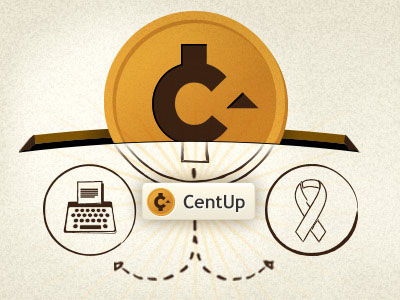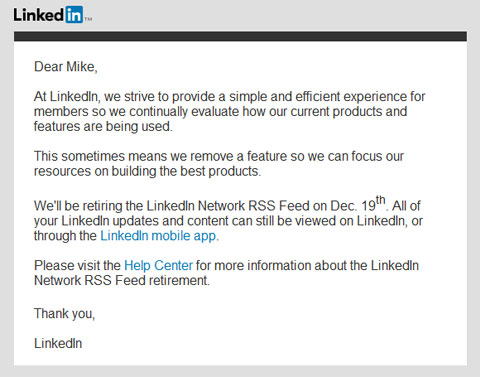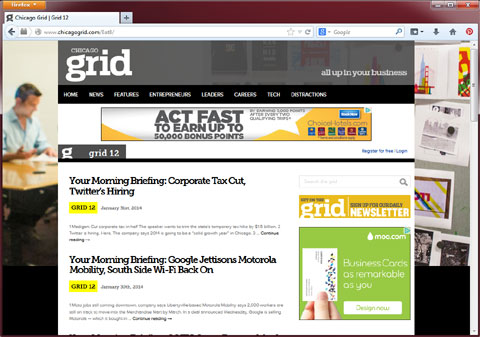Odiogo Reads The Hot Iron To You
 Where most of you reading this post from The Hot Iron blog are looking at the text on various computing devices, and a few of you may be using screen reading software to convert the words on the screen to speech, did you know anyone reading could have this and every other post read to you?
Where most of you reading this post from The Hot Iron blog are looking at the text on various computing devices, and a few of you may be using screen reading software to convert the words on the screen to speech, did you know anyone reading could have this and every other post read to you?
For years, going back as far as the earliest posts, the ability to listen to my blog posts has existed, but for some reason I didn’t promote is much as I should have. As there’s no time like the present, allow me to introduce to you The Hot Iron read to you by odiogo.
Odiogo is a service that converts text to speech into an audio file and distributes the files in MP3 format. You can bookmark this page and listen to the audio for the last 10 posts. There is also an RSS feed which you can subscribe to in your favorite RSS feed reader and podcast player.
Odiogo started as a free service, changing to a paid service model last year with an exception to non-commericial blogs. As I have yet to be able to retire to the Cayman Islands from the money I (don’t) make here, I have been able to keep the transcription of these posts, as everything else here, free.
Odiogo uses a digital voice to read posts. One major reason why I added it was because it was able to convert “Maddaloni” very well! Typically an audio version of a podcast is available within an hour or so of when it was posted to the site.
Along with writing this post, I have made the link to the odiogo page much more prominent in the sidebar of the site. I also invite you to listen to one of the audio transcriptions and let me know what you think of it. Have you already added it to your podcast app? Will you never listen to it again? Feel free to share your opinion in the comments below.
This is from The Hot Iron, a journal on business and technology by Mike Maddaloni.
Did you enjoy this? Subscribe to The Hot Iron by RSS/XML feed or Read by Email.
Announcements • Blogging • Business • Social Media • Technology • Web Development • (0) Comments • Permalink
CentUp Offers A Unique Profit Model For Writers

Editor's Note: CentUp is no longer in operation, and this post was edited to remove links to their Web site and embedded elements that are no longer functioning, as well as links to a similarly no-longer-active Vine video.
How much would you pay to read this blog post?
Ok, I hope you are still with me and not rolling on the floor in laughter. In all seriousness, I am asking the question – how much would you pay to read this blog post, or any blog post for that matter, here on The Hot Iron? No, I am not going to put up a paywall and start charging people to read here as I don’t believe in such a thing.
As it takes time to come up with ideas, write them, edit them, come up with some original visual to go with them and post them to the site, that time is some value to me. That being said, I do not do this for direct financial gain. Where I do enjoy doing so, getting a little something in return can’t hurt. And for good measure, how about help a charity in the process?
What I just described in the last few sentences is the idea behind CentUp, a service which has been around for almost a year, which provides a button – similar to a social sharing button – where you can contribute a few cents to a few dollars to a content writer directly on their site. If you scroll to the bottom of this post at The Hot Iron you will see a CentUp button below the row of social media sharing buttons, so I can speak to CentUp with first-hand experience.
Click a Button, Help a Writer and a Charity
The end-user experience of CentUp is very straightforward, and its elegance comes from its simplicity, as you can see in the embedded Vine video above. If you cannot see the video, you can view the video of me pressing the CentUp button at Vine. You simply click on the CentUp button on a Web page or blog post that you would like to give to (or pay to or contribute to or whatever term you deem appropriate). Half of whatever amount you choose will go to the publisher, and half goes to a charity selected by the publisher from a list of charities affiliated with CentUp.
To use the button, you need an account with CentUp. If you click on the button and don’t have an account, you can sign-up on their Web site, put funds in your account, then log in and contribute. As I have the button on my site, I have an account with CentUp, and whenever I see the button and providing I liked what I read, I will give at least 10 cents to a publisher. If you’re thinking, “not another account to setup,” read on as you’ll learn more of the value a CentUp account delivers.
All clicks of the CentUp button on The Hot Iron are shared between myself and the Women With Drive Foundation, a great organization who provides women with transportation means to get to their jobs. I truly did not do them justice with that boiled-down description and I encourage you to visit their Web site for more information. There are a number of charities that content publishers can choose from and this list has expanded over the last year I have used CentUp.
The Point Is Not Early Retirement
By so far earning under a dollar per blog post, I am not considering CentUp part of my overall retirement strategy. But that is not why I use CentUp. First and foremost, I believe there is plenty of content out there on the Internet that is of value. This includes blogs, news sites, and Web sites in general. That being said, I or anyone else is not going to go through the process of registering for every site out there and paying some amount of money for content of what quality I really don’t know until I explore and read it.
In other words, if I read something and find value in it, I can offer payment for it, a true value-for-value model.
CentUp offers a one-stop payment method for Web content. I don’t need all of those accounts and logins and passwords, and sharing my credit card information all over the place. I also don’t need large sums of money to register for varying content. If I like something, I can give them a little bit of money. If it is good content, many people will do that. Right next to the button is how much money has been given so far, which is a transparent way to see how potentially popular and relevant the content may be. CentUp is a simple model that makes sense, and one I have embraced.
There is no fee to join, and adding the button to your blog or site is technically straightforward. You can tag an entire site or individual pages or posts on a blog. Again I am not doing CentUp the best justice they deserve, and I encourage you to explore the CentUp site for more information and if you have any questions on it conceptually or technically.
Unique Community of Content
There are several dozen sites now using CentUp and that number grows whenever I check back on the site. CentUp has taken advantage of this collection of content and has built a community of writers and publishers, including a newsletter of curated content on a regular basis. I have now started to subscribe to many of their RSS feeds of these blogs and sites to read their content directly. They recently added a reader app to their site within your account, but I still prefer my RSS reader for aggregating all of my content.
Do you use CentUp? Have I piqued your interest in it? Would you avoid it like I avoid Facebook? Share your thoughts in the comments below, and feel free to ask any questions you may have about CentUp as I may be able to help, or someone from CentUp may even respond themselves as they are readers as well.
This is from The Hot Iron, a journal on business and technology by Mike Maddaloni.
Did you enjoy this? Subscribe to The Hot Iron by RSS/XML feed or Read by Email.
Blogging • Business • Social Media • Technology • Thrive • Web Development • (5) Comments • Permalink
What I Learned This Week For January 31 2014
Though a day late, hopefully you will find useful at least 1 thing I learned this past week, as collected on the back of a flyer for VHS to DVD media conversion.
- Though every media outlet and their grandmother in the Windy City reported on the demise of Chicago Grid by Wrapports, the publisher of the Chicago Sun-Times newspaper, nobody has noticed the Grid Web site is still up-and-running, at least in part. I only found this out as I was still subscribed to their RSS feed, and after several days a daily summary was again appearing. Though I shared this several times this past week with media outlets in the city via Twitter, nobody else seems to be talking about the ghost RSS feed or seems to care.
- If you read any book, especially children’s stories, through the lens of the late Dr. Sigmund Freud, you will never read one the same way again, or may not want to read one at all.
- When you use a service on a daily basis and never even think twice about its quality or reliability, that is not a good thing, that is a great thing. It also probably explains why I haven’t blogged about my great experience with Phone.com over the almost year I have been with them for my home phone service. I need to do something about that.
- Beverly Hills, California got its name from Beverly, Massachusetts, namely its Beverly Farms section. Now I have been to both communities, and I couldn’t think of any 2 places that could be further opposites of each other.
- When I tell people I am from Massachusetts, the next thing they say is that I don’t have a Boston accent. When I go onto explain to them my roots are in the western part of the state, where they use all 26 letters of the alphabet and put them in the right place. For as many times as I state that, it really doesn’t resonate with people, so I thought I’d let the good Dr. Westchesterson explain it better than I possibly could with his video Western Mass. – it is embedded below or watch it on YouTube. I can’t think of a better way to end one month and begin another!
This is from The Hot Iron, a journal on business and technology by Mike Maddaloni.
Did you enjoy this? Subscribe to The Hot Iron by RSS/XML feed or Read by Email
Blogging • Business • Thrive • Web Development • What I Learned • (0) Comments • PermalinkControlling Your Own Destiny With Technology, Revisited
Over 5 years ago I wrote here on The Hot Iron about controlling your own destiny or controlling as much of it as possible. If you read (or re-read) the article, I was looking at this topic mostly from the point-of-view of working with external technology vendors and what happens when one doesn’t live up to expectations or even shuts down.

Fast-forward to 2014, and my lens on this topic has changed dramatically. Where then I was talking about control you had over external entities, now I am thinking of my needs and my information and if I even need external entities at all.
As time goes by businesses online come and go, or in some cases specific services from those businesses. From GeoCities to Posterous to Nokia Ovi to you name it, one day something you are using is gone the next, and hopefully you don’t lose tangible assets – e.g. data, photos, documents, etc. – in the process. Granted losing sleep, your temper or clumps of hair are collateral damage of this type of situation.
Add to this the overall uncertainty of technology and business, not to mention the ever-changing terms of services from vendors that may change to your disadvantage, or truly not knowing what is “behind the curtain” with a service or who or what has access to it, you may end up in a situation fast where you need to quickly change course.
So what do you do? Where every situation is unique, I’d like to share the path I am taking these days when it comes to online services.
Tell me what you want, what you really, really want
In short, that whole “goals” thing again! Having a goal, purpose, mission statement or random scribbles on a napkin can help guide you through the choices you make, In addition to the goal, think about other controllable factors, such as budget, timeline and how much time you have to invest initially as well as on-going. These factors can also influence your decision, no matter the goal.
Once you have gone through the goals and review process, and have made choice, pat yourself on the back, then plan for what happens if you have to make another change. As this change could occur next week or in the next decade, you don’t need a detailed, point-by-point plan, but you do need some information, such as contact, license, login and how you are using or customized the service. From there, determine how and to what extent you can extract data or information from the vendor or service, both for a final move or on a regular basis for off-site storage.
The Path of a Service Change
A couple of years back, after my several times a day ritual of reading what was new in the world in my RSS reader, Google Reader, I started to think about how I was reading, not what, and if there was a better way.
Google Reader, for those who don’t know, “was” a free RSS feed aggregator and reader from the search giant. It was a very popular service, but one that was slow to innovate. Despite this, I had over 200 RSS feeds subscribed to thru Google Reader, and it was my primary source for news and information, both on the world around me as well as technology, sports, and other topics of interest.
What I realized was quite simple – Google, or anyone who had access to the data stored in the Google Reader service, knows everything I read. Everything.
The more I thought about this, the more my decision became clear. There must be another way for me to aggregate and read RSS feeds where I have control of my destiny – the software, the service and most importantly the information. As I searched I found a variety of hosted services and software I could run myself. After some analysis and a personal recommendation from my good friend John Morrison, I went with Fever and have never looked back.
Fever is a self-hosted RSS reader developed by Shaun Inman. For just 1 person running the entire operation, Fever is a quality product. It is a paid license and is probably the best US$30 I have ever spent. With Fever I could get the same features I got from Google Reader, with a much more stylish Web interface, including a mobile-optimized experience for the iPhone’s Safari browser. It has a “hot” topic feature that I have never used and really can’t talk to, for the main functionality has suited me perfectly.
My migration from Google Reader to Fever meant installing the latter on a Web hosting service I use, then migrating the feeds from Reader to Fever. This step, though very straightforward, requires some knowledge of how a Web site with a database is setup and configured. For migrating the feeds, I could have automated the process and extracted all feeds and uploaded them into Fever. However I chose a manual process as I had not really taken a close look at all of the feeds I was subscribed to, and as a result I culled the collection by about 50 feeds, many which were no longer feeding any content at all.
In mid-2013, Google shut down its Reader service, causing an uproar from many, but not from me. By that point, I had been off of Reader for over a year. Google gave a long lead time to switch to any other service, which is now always the case. That being said, having control of the service means you own the information as well as how you access it.
Always Looking
As new methods, products and service become available, it is important to spend some time evaluating services. Reading and research alone are not enough, a stalking with friends and colleagues also help expose you to options as well as first-hand accounts of their utility.
Where in the past I have used services like Google Reader, Basecamp, Blogger and Google Calendar, today I am using Fever, ActiveCollab, ExpressionEngine and ownCloud respectively. I plan to talk more about some of these services in the future. But this is my list now, and it is subject to change without much advanced notice!
Have you yourself changes services or rolled your own, or is it something you don’t see yourself doing at all? I welcome your thoughts and questions in the comments of this post.
This is from The Hot Iron, a journal on business and technology by Mike Maddaloni.
Did you enjoy this? Subscribe to The Hot Iron by RSS/XML feed or Read by Email.
Strategize • Technology • Web Development • (2) Comments • Permalink
LinkedIn Shutting Down Network RSS Feed On December 19, 2013 To My Dismay
For as many great major and incremental changes LinkedIn has made the business social networking service, they have eliminated a few services which I found resource rich and grew dependent on. One was LinkedIn Answers, a robust business question and answer section of the service which was shut down and disappeared earlier this year. Add to the list the RSS feed of network updates, which a few days ago I was informed it is going away as of the end of this week on December 19.
The following is an image of the email message I received from LinkedIn.

The following is the text of the email message I received from LinkedIn.
Dear Mike,
At LinkedIn, we strive to provide a simple and efficient experience for members so we continually evaluate how our current products and features are being used.
This sometimes means we remove a feature so we can focus our resources on building the best products.
We'll be retiring the LinkedIn Network RSS Feed on Dec. 19th. All of your LinkedIn updates and content can still be viewed on LinkedIn, or through the LinkedIn mobile app.
Please visit the Help Center for more information about the LinkedIn Network RSS Feed retirement.
Thank you,
For some time now I have been subscribed to the RSS feed of my network updates. If you use LinkedIn, this is the information on its home page, which shows updates to your connection’s profiles as well as articles they have shared, groups they have joined, if they have a new connection, etc. This would allow me to see each and every update in my growing network, which was valuable to see where people were moving and information they were sharing. It was also much easier to read, as I could scan the headlines of these changes and posts, and click on anything I wanted more information on.
In other words, the network RSS feed was simple and efficient. But wait, isn’t that the same reason why LinkedIn gave for killing it?
If you couldn’t guess I love RSS!
It goes without saying that I love RSS as it is the primary way I keep informed. RSS is not just for blogs, as I get it for news, weather, sports, events, and networking information. Of course the networking information will decrease as a result of LinkedIn eliminating the network RSS feed.
Using my RSS reader of choice, Fever, I am able to aggregate all of the above information and then some. In the case of LinkedIn, I feel because of the RSS feed I am visiting their site more often, and in the process viewing the banner ads they are selling, not to mention good old-fashioned networking. Did I mention I am viewing the banner ads more often as a result of RSS?
Business decisions for business networking
My guess is I am one of a small minority of people who actually subscribe to the RSS feed, and as a result they are simply turning off the functionality. LinkedIn promoted the RSS feed, complete with the orange RSS icon, at the top of the network updates list. I can’t remember the last time I have seen this. As I have seen little uproar from others about the cancelling of this service, maybe that minority is, as I’d say in Boston, wicked small?
In addition, by controlling the display of network updates, they have the ability to offer more information and services, such as sponsored updates. I have noticed these on the site but not in my RSS feed. Of course to add these to the feed would cost money and resources, and from their message, this is something the new-publicly traded business does not want to do.
RSS is still not dead, #VIVARSS
In the end, after the dust settles from the nuclear winters, it will be just the cockroaches and RSS. Why? Well, as for RSS, it is open and distributed, does not rely on a continuous network connection to work, and is very simple to read and process. After Google killed its Reader RSS aggregator, many wondered if RSS was dead technology. Where it may not be the shiny new object on the Internet that it was, it is a core service that can easily be adopted and utilized, and that in itself makes it valuable.
Did the LinkedIn Network RSS feed shutdown impact you? Did you even know it existed? Share your thoughts in the comments of this post.
This is from The Hot Iron, a journal on business and technology by Mike Maddaloni.
Did you enjoy this? Subscribe to The Hot Iron by RSS/XML feed or Read by Email.
Build • Business • Technology • Web Development • (5) Comments • Permalink




